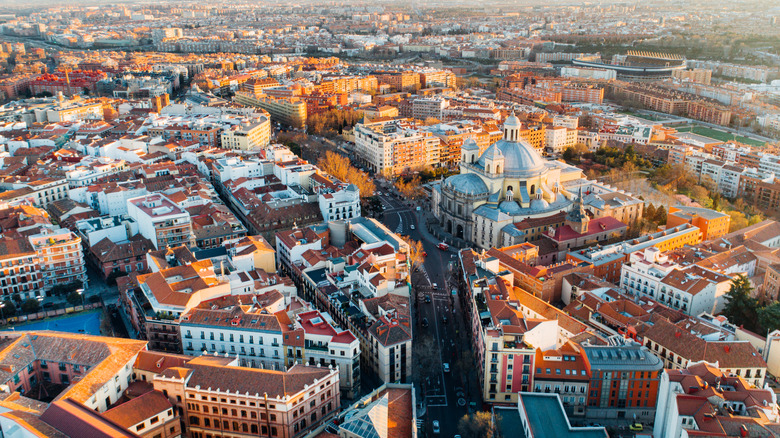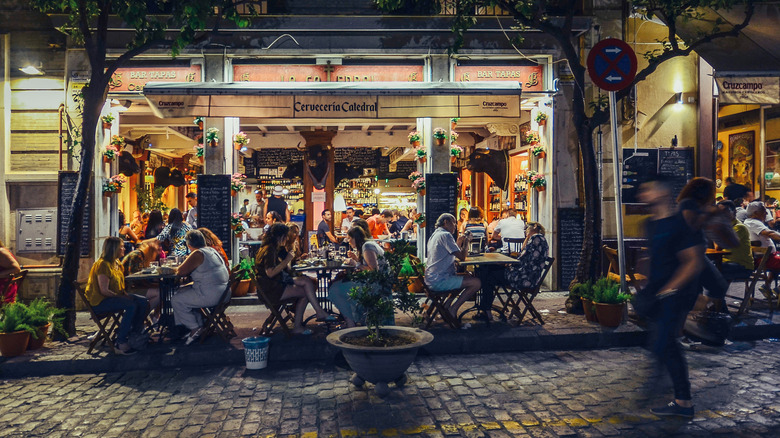The Historic Reason Dinner Is Late In Spain
Spanish cuisine has a diehard following outside its borders, from its tradition of tapas to its dishes like paella, but fortunately, the time Spaniards eat dinner hasn't been adopted by other countries. They may eat breakfast at a typical time of 8 a.m. in Spain, but dinner is unusually late — even by European standards — at around 10 p.m.
The Spanish have a long day planned around when and what to eat, per Trip Savvy. The day starts with breakfast. Lunch follows and is the biggest meal of the day — it can be three courses if you select el menu del dia at a restaurant, according to Trip Savvy. Between lunch and dinner, there is a late afternoon snack referred to as la merienda, which can be a sweet treat or something more savory like bread with a slice of meat, per Oh My Good Guide.
The afternoon also includes a two-hour "siesta" when most businesses close and employees rest, although the BBC reports that more businesses are remaining open for tourists. The siesta, according to Insider, is part of a nationwide policy. With so much food consumed throughout the day and the late afternoon snack, one may assume that dinner in Spain is served so late because that's when Spaniards find time to dine, but the real reason goes back to World War II and a decision made by leader General Francisco Franco.
A different time zone
It was in 1940 that Spain's leader decided to align his country with Nazi Germany and change its time zone to match, reports the BBC. As a result, Spain remains an hour ahead of the other countries in the same longitude (England, Portugal, and Morocco) and instead follows Central European Time. At that time of the change, Spaniards continued to enjoy their meals at the same time as prior to the time shift, but it was simply an hour later, according to the BBC. The work days even ended later (although there remains the afternoon siesta), with workers clocking out around 8 p.m.
With dinner being served so late, what do Spaniards eat? Oh My Good Guide says the evening meal might include tapas, fish, meat with a green salad, or some cold cuts, such as ham. It often includes a light dessert. Trip Savvy says diners opting for a sit-down dinner may choose to have raciones, which are comparable to large tapas. Then, following dinner, the waiter may offer a digestif (chupito) for free.
After all the eating starting early in the morning, the Spaniards finally find time for another important component of the day — sleep.

